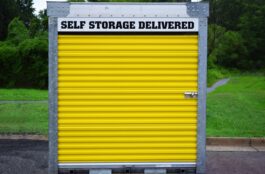Floods can be extremely dangerous and destructive. It can lead to the death or serious injury of many people, animals, and significant financial loss because of flood damage. Unfortunately, many insurance plans do not cover flood damage, and getting flood insurance can be costly, particularly in high-risk locations. However, rather than letting individuals suffer, people might ask their city governments to give flood protection.
How to Lower the Chances of Flood Damage
Flood damage can be severe and expensive. Since property insurance policies do not always cover it, homeowners and businesses should take some easy but useful steps to lower the risk to their property and keep costs low. Below are a few tips to keep in mind in case of flooding in your home.
1. Know Your Situation
The first step in flood protection is to determine the probability of flooding in your place and how well your home is designed to endure it. Next, know if you’re at risk of flooding if you do not know. People often say, “I never thought this type of thing would happen to me.” Check the risk. If there’s a chance of it happening to you, be prepared.
2. Make a Plan
If you do not have physical flood protection, you might need to evacuate, which will need cautious preparation and monitoring. A company’s existing fire exit plan could be altered. Make sure you have a flood emergency response plan and a team available. Prepare a flood kit that may be kept in a place where staff members can instantly get it if the property floods.
3. Emergency Flood Kit
Being prepared will make things easier if ever your property is flooded. If you choose to remain in your home or are evacuated to a rest center, creating an emergency flood kit is essential to avoid risks and make it through the worst. The following items must be in your emergency kit:
- Insurance coverage and other crucial files
- Chargers and smartphones
- Cash or credit cards
- Medical supplies or a first-aid kit
- Non-perishable food items
- Duvets, blankets, and clothing
- Flashlight and batteries
- Bottled water
- Essential toiletries
4. Plan for Business Continuity
Companies must have a continuity plan ready to ensure continuous operational efficiency. Modern technology makes it easy to run a portable business. You can either move to another property or operate on a reduced scale for the duration of the flood. Furthermore, homeowners can use these guidelines to make sure that they can properly take care of their families in case of flooding. Visit this website to learn more.
5. Get a Flood Insurance
Are you protected? Check your insurance plan to know if the flood damage is covered. Just a small percentage of people residing in high-risk flood zones know whether their insurance covers water damage. It is better to repair the damages if you can keep the water out. Consider simple flood-prevention procedures such as portable flood barriers. Find the best remediation company right here.
Avoiding flooding and finding affordable flood insurance might be hard. The best thing you can do in many cases is to keep your property from being flooded. Many people strive to move from flood-prone locations. However, due to the high risk of this natural disaster, properties often lose value.


